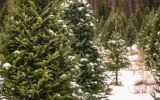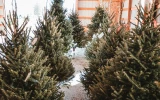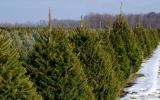How Much Is a Truckload of Christmas Trees Worth?
With the holiday season fast approaching, many people are eager to purchase a fresh and fragrant tree to decorate their homes. If you plan to purchase a truckload either to sell or distribute, the pricing depends on the location of the buyer and seller and the transportation costs involved in shipping the trees. In this article, we'll help you understand the value of a truckload of Christmas trees and the logistics involved in shipping them.
On average, a truckload of Christmas trees can cost anywhere from $5,000 to $15,000, depending on various factors such as the tree species, size, and quality. The most popular Christmas tree species include Douglas Fir, Fraser Fir, and Balsam Fir, known for their excellent needle retention and pleasant aroma.
Many Christmas tree farms use flatbed trucks or specialized trailers to transport the trees, and some even use helicopters to deliver the trees to remote locations. We'll get into more detail about how this affects the value of truckloads of Christmas trees.
As you develop your business plan for starting a Christmas tree farm, be sure to account for how much a typical truckload of trees might sell for once you're ready to harvest.
Summary
- Different tree species have varying price ranges per foot, with Fraser fir generally being the most pricey ($15 to $30 per foot), followed by Noble fir ($20 to $30 per foot), while Douglas fir and Balsam fir are more affordable options ($10 to $20 per foot).
- The increasing cost of Christmas trees in recent years can be attributed to factors such as rising transportation costs and regional shortages.
- The use of refrigerated trucks for transporting live Christmas trees helps to mimic the trees' natural environment, reducing stress and preserving their quality; however, it has higher costs of around $700 to $1,000.
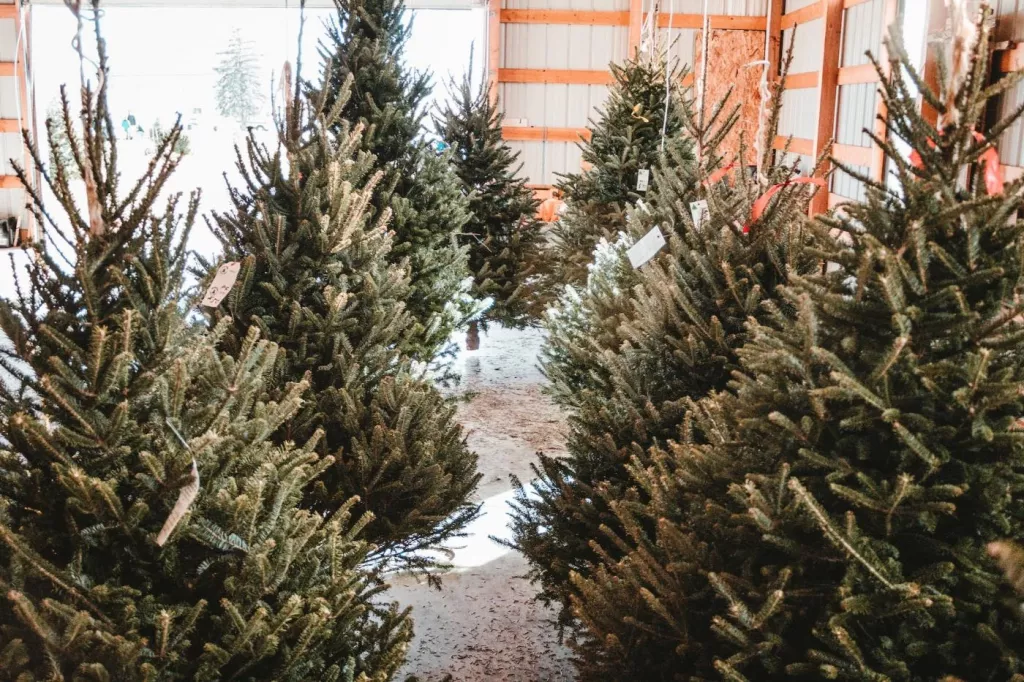
On this page:
A Truckload of Christmas Trees Can Cost Up to $15,000
On average, a truckload of Christmas trees can cost anywhere from $5,000 to $15,000, depending on these various factors.
The average price for a truckload of Fraser fir trees in 2023 was around $12,000. However, prices can vary widely depending on the quality and location of the trees.

In recent years, the price of Christmas trees has been on the rise due to a variety of factors, including increased transportation costs and a shortage of trees in some regions. However, there are still many affordable options available if you're willing to shop around.
Factors Influencing the Price of a Truckload of Christmas Trees
Many factors can influence the price of a truckload of Christmas trees. Some of the most important factors include:
The difference in prices of different tree species
Below is a breakdown of some of the most popular Christmas tree species and their average prices:
| Tree Species | Price Range | Estimated Price Range (per truckload) |
|---|---|---|
| Fraser fir | $15-$30/foot | $800 - $1,200 |
| Douglas fir | $10-$20/foot | $700 - $1,000 |
| Balsam fir | $10-$20/foot | $600 - $900 |
| Noble fir | $20-$30/foot | $900 - $1,300 |
| White pine | $5-$10/foot | $500 - $800 |
| Scotch pine | $5-$10/foot | $400 - $700 |
Different tree species have different prices due to their unique features. For example, Fraser fir, Douglas fir, Balsam fir, and Noble fir are all popular choices for Christmas trees, but they vary in price.
Fraser fir is generally the most expensive, followed by Noble fir, while Douglas fir and Balsam fir are more affordable options. White pine and Scotch pine are also available, but are generally less expensive.
You need to choose the right species of trees that are suitable to the climate conditions in your region, as some Christmas tree species may introduce pests and diseases to your farm and may also become invasive.
The quality of the trees can also impact the price
Trees that are uniform in shape, size, and color are generally perceived as more visually appealing and desirable. Customers often seek out trees that have a consistent and pleasing appearance, as these trees are seen as more attractive for decorating homes and public spaces. As a result, suppliers and retailers can command higher prices for such high-quality trees due to the increased demand.
On the other hand, trees that are less uniform in shape, size, and color may be perceived as lower in quality and may not fetch as high a price as their more uniform counterparts.
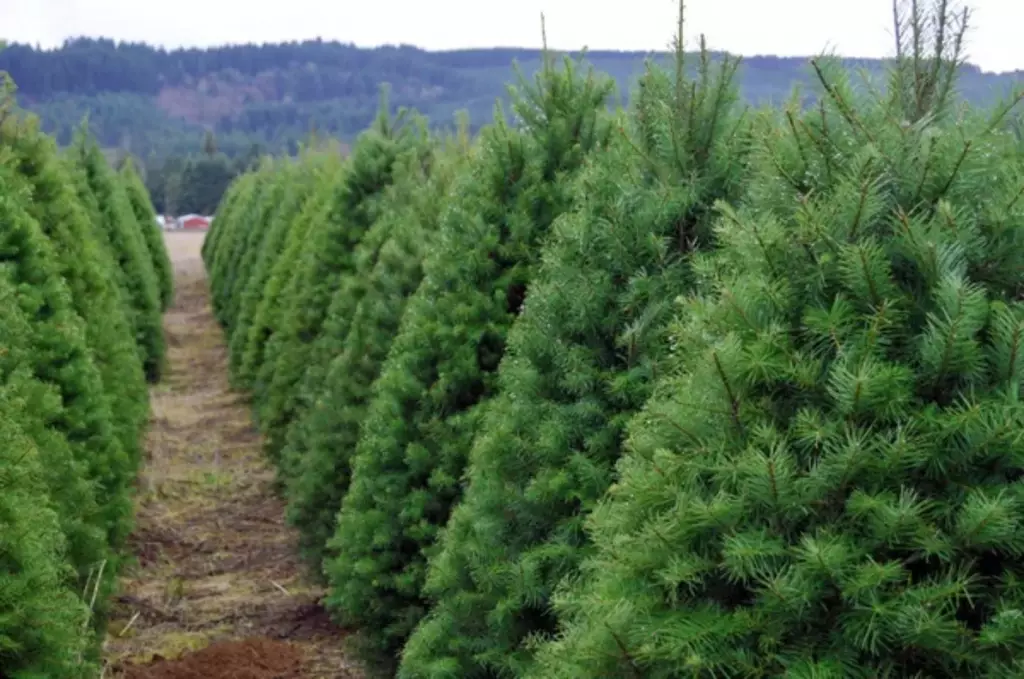
These trees may be suitable for different markets, such as those looking for more natural or rustic tree appearances, but they may not command the same premium prices as the uniform trees.
In the context of a truckload of Christmas trees, suppliers and distributors may be able to negotiate higher prices for the truckload, especially if the trees are destined for markets where quality and appearance are key factors for consumers.
Conversely, a truckload of less uniform trees may not command as high a price, and suppliers may need to target different market segments or adjust their pricing strategies accordingly.
The location of the supplier can also affect the trees' worth
The worth of a truckload of Christmas trees can be significantly affected by the location of the supplier for several reasons:
| Supplier Location | Impact on Estimated Price of Truckload of Christmas Trees |
|---|---|
| Proximity to market | Closer proximity lowers transportation costs, making the overall price more competitive |
| Climate and terrain | Milder climate and fertile soil can produce healthier and more aesthetically pleasing trees, increasing their value |
| Availability of tree species | Certain regions may have specific tree species in high demand, leading to higher value due to scarcity |
Firstly, the proximity of the supplier to the target market can impact transportation costs. If the supplier is located closer to the market, the cost of transporting the trees to their destination will be low, making the overall price of the truckload of Christmas trees more competitive.
Secondly, the climate and terrain of the supplier's location can influence the quality and variety of Christmas trees available. Different regions have different soil types, weather patterns, and elevations, which can affect the growth and health of Christmas trees.
For example, suppliers in regions with a milder climate and fertile soil may produce healthier and more aesthetically pleasing trees, thus increasing their value.
Furthermore, the location of the supplier can also impact the availability of specific tree species. Certain regions may be known for producing specific types of Christmas trees that are in high demand due to their appearance, needle retention, or fragrance. As a result, the scarcity of these trees in certain locations can drive up their value.
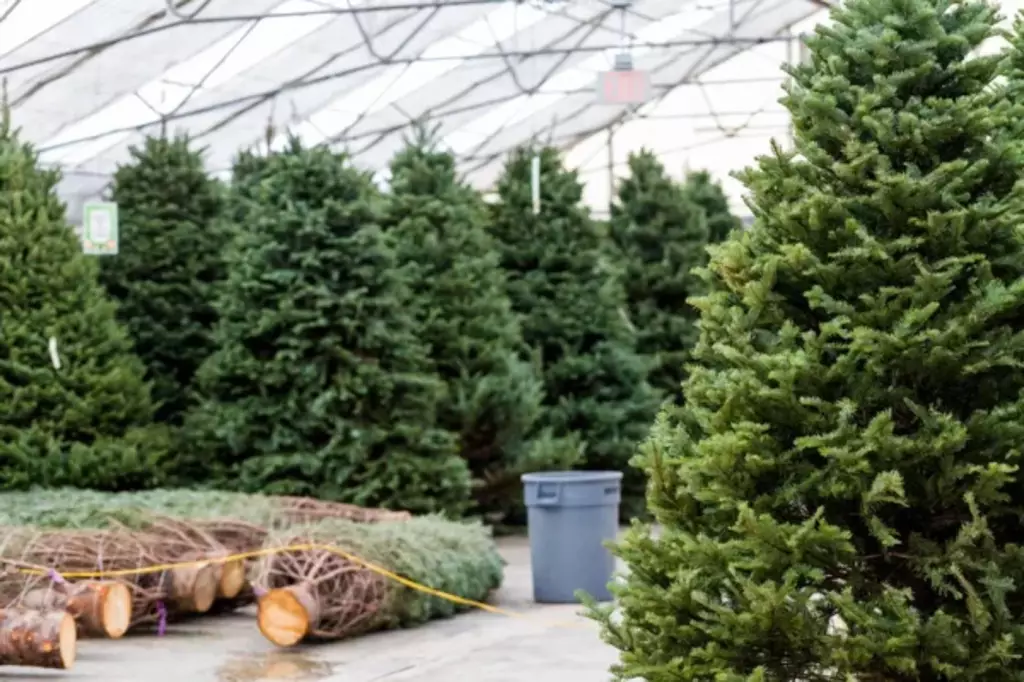
In addition, the reputation and branding of Christmas trees from a particular region can also influence their worth. For example, trees from regions with a long-standing tradition of Christmas tree farming or a reputation for high-quality trees may command a premium price due to their perceived value and desirability.
Moreover, the economic conditions and cost of production in the supplier's location can affect the pricing of the Christmas trees. Factors such as labor costs, land prices, and regulatory requirements can vary from one region to another, impacting the overall production costs and, consequently, the pricing of the trees.
Knowing how many trees fit on a truckload is important for Christmas tree farmers to estimate their potential annual profits from a mature farm operation.
Logistics of Shipping Christmas Trees
Below are some things to consider when shipping Christmas trees:
Choose the right shipping method
When shipping Christmas trees, there are several shipping methods to choose from, including flatbed trucks, dry vans, and refrigerated trucks:
| Shipping Method | Estimated Price |
|---|---|
| Flatbed trucks | $500 - $800 |
| Dry vans | $600 - $900 |
| Refrigerated trucks | $700 - $1,000 |
Shipping via flatbed trucks
Flatbed trucks are a popular choice for shipping Christmas trees due to their ease of loading and ability to carry a large number of trees. The flatbed design allows for the straightforward loading and unloading of trees, making the process more efficient.
Additionally, the open nature of flatbed trucks enables them to accommodate a significant quantity of trees, making them an ideal option for transporting Christmas trees from farms to retail locations or distribution centers.
This efficiency and capacity make flatbed trucks a practical and widely utilized choice for the transportation of Christmas trees during the holiday season.
Transporting via dry vans
Dry vans are a type of transportation option used for shipping goods, including trees. They are essentially enclosed trailers that protect the cargo from the elements during transit.
However, they are not as popular for transporting trees compared to other options because they have limited capacity. This limitation means that they can only carry a restricted number of trees at a time, making them less practical for large-scale tree transportation compared to other types of trailers or transportation methods.
Shipping live Christmas trees using refrigerated trucks
Refrigerated trucks are utilized for transporting live trees to maintain a controlled temperature and humidity level, preventing the trees from drying out during transit.
This is important because live trees require a specific environment to stay healthy and vibrant, and the use of refrigerated trucks helps to ensure that they arrive at their destination in optimal condition.
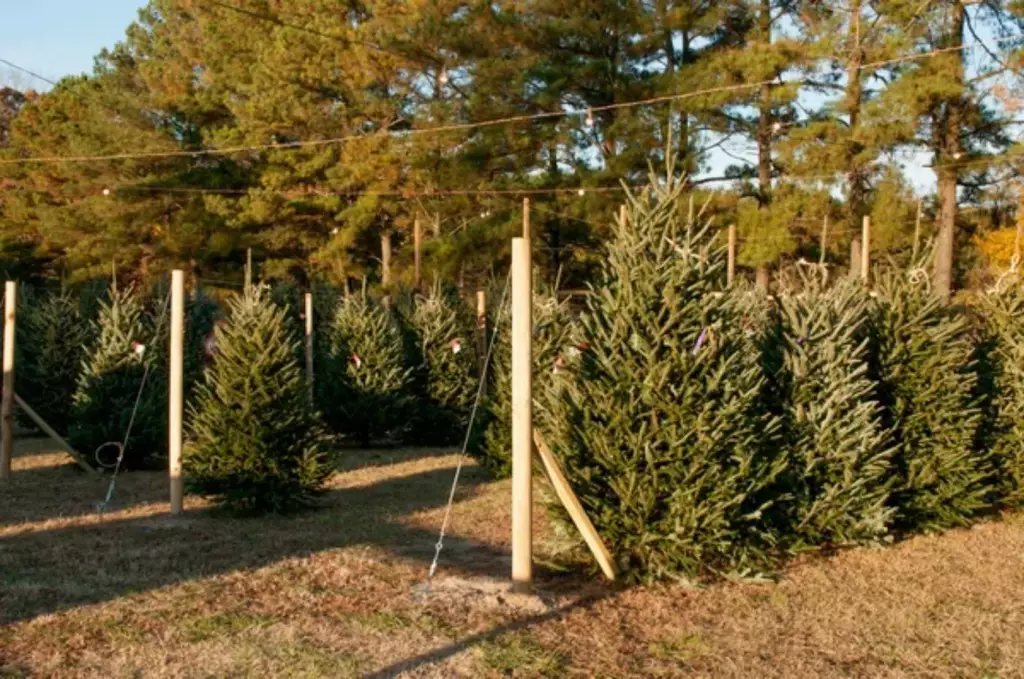
By controlling the temperature and humidity, the trucks help to mimic the trees' natural environment, reducing the stress on the trees and increasing their chances of survival during transportation.
This method is particularly crucial for preserving the quality and appearance of the trees, especially for ornamental or landscaping purposes.
Protect the trees during transit
Protecting Christmas trees during transit ensures that they arrive at their destination in good condition. Trees should be wrapped in netting to prevent damage to the branches and needles.
Additionally, trees should be secured to the truck with straps to prevent them from shifting during transit. This also helps protect the trees from extreme temperatures, which can cause them to dry out or freeze.
